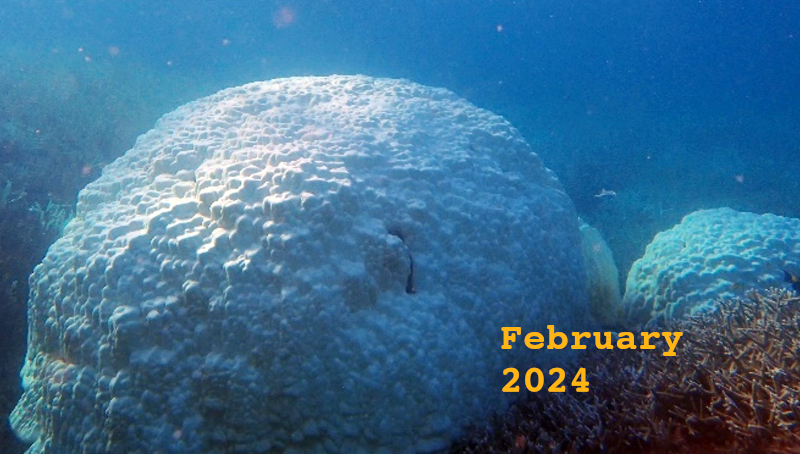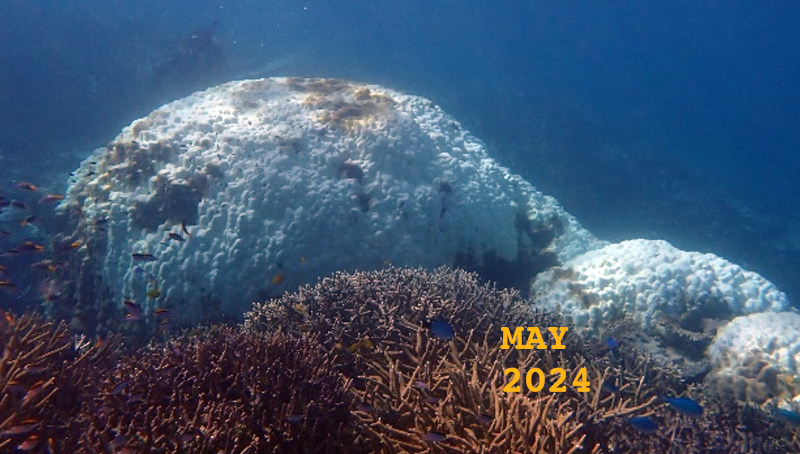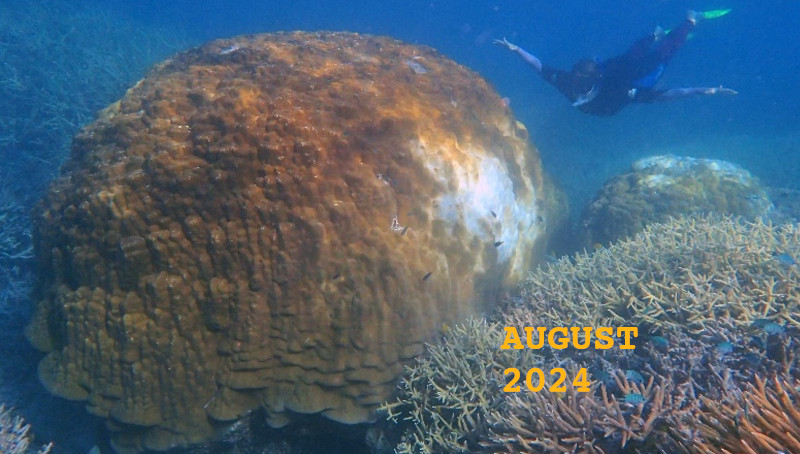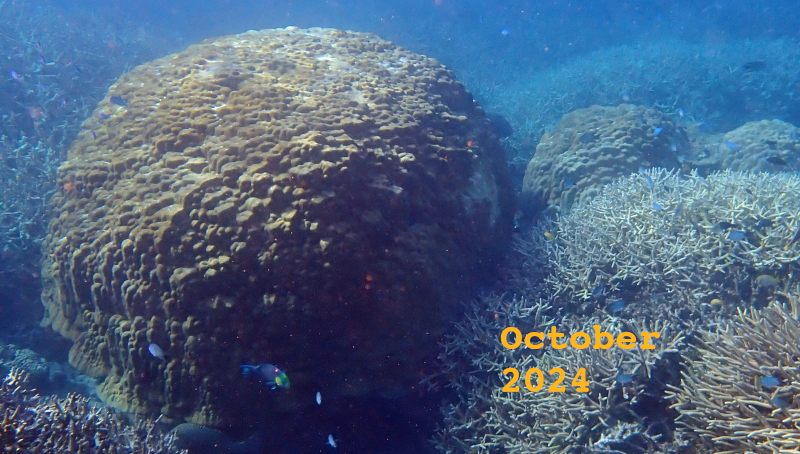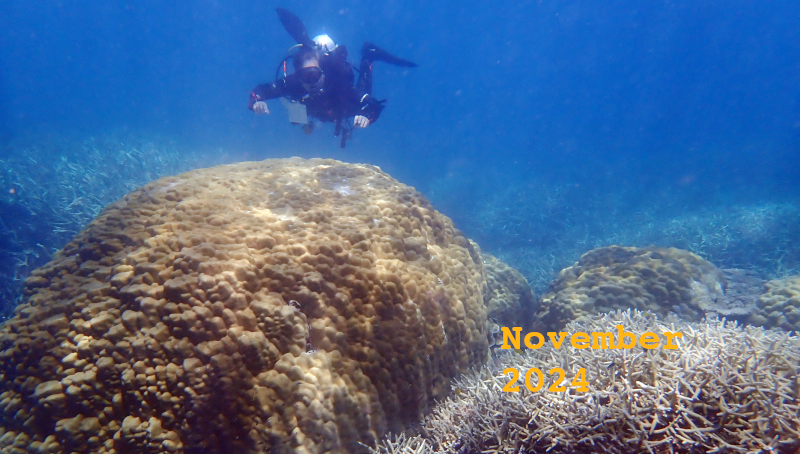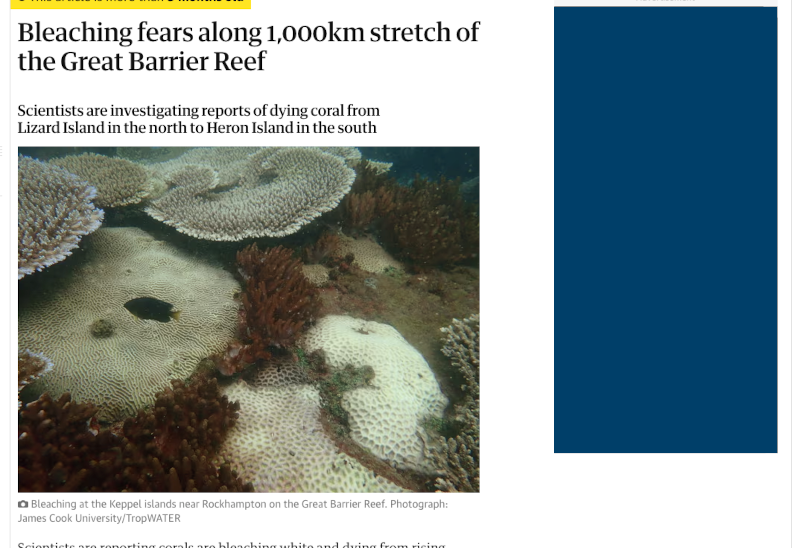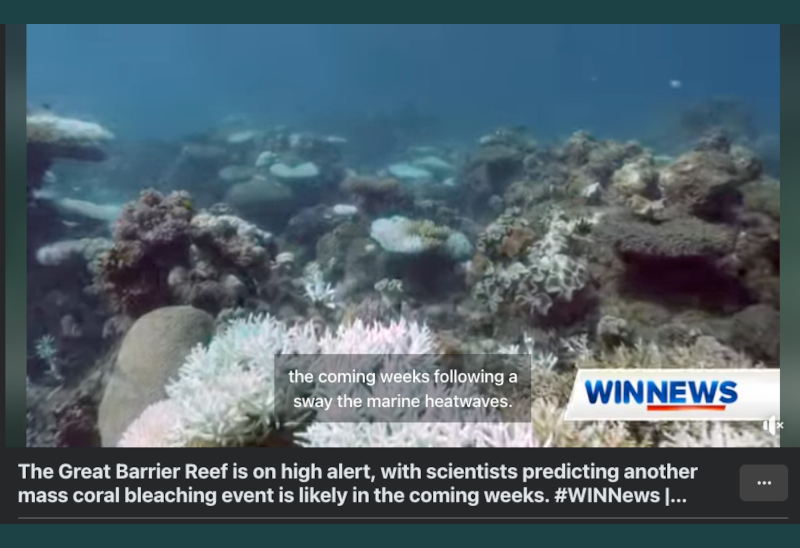Coral Reefs and Climate Change
Our story
This year the Great Barrier Reef has experienced its 5th mass global bleaching event in 8 years. We were on Heron Island at the time of bleaching in February 2024 to run our annual Ambassador workshop. On one of our snorkels, we noticed that an enormous 4m wide Porites bommie close to the Harbour was completely white. It was heartbreaking. Porites are slow growing, only 0.5 cm per year so its colossal size indicates it must be very old, maybe around 800 years old. These bommies form an important building block for coral reefs and generally are the ones that can survive, warming and bleaching events. Every time we went back to Heron, we checked on this beautiful bommie. In May when the water temperature already dropped to 24 degrees, the bommie was still white and hardly showed any sign of recovery. It wasn’t until August that about 80% of the colony recovered. The healthy zooxanthellae left in the inner gastrodermis managed to recolonise the outside of the bommie showing dark healthy patches. Lastly, it took another 2 months for the coral to appear completely brown again.
The Porites showed that it is resilient but what will happen next year? …
The intensity and frequency of bleaching events in increasing. The Great Barrier Reef experience five mass bleaching events in the last 8 years, 2016, 2017, 2020, 2022, 2024.
Author: Marcin Kielar
CoralWatch Ambassador
Sites: Heron Island Reef, Lady Musgrave Island Reef, Flynn, Milne and Hastings reefs (The Great Barrier Reef), and also: coral reefs in Maupity, Bora-Bora, Rangiroa and Fakarava (French Polynesia)
Time: 2022, 2023, 2024. Coral bleaching footage is from 2024.
Music: “Saturn” by Sleeping At Last
We like to thank the singer-songwriter and multi-instrumentalist Ryan O’Neal for the music track for this video.
The Bleaching process
In healthy coral, symbiotic algae (zooxanthellae) live within the coral tissue. Algae provide the coral with food and energy and give the corals their colours. Stressful environmental conditions such as increasing seawater temperatures can cause the coral to expel the algae, changing the coral colour to white. This whitening of coral is called ‘coral bleaching’. Sometimes corals can recover from bleaching, but if stressful conditions are severe, or persist for a long time, loss of algae and the nutrients they provide can lead to coral death. Even when corals do recover, they do not always return to full health.



